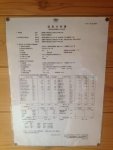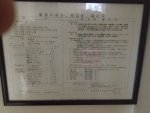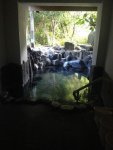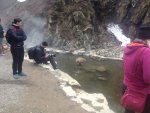Just came back from 2 weeks driving around central Japan - the Japanese Alps. Water runs everywhere. The Japanese use an enormous amount of concrete to control the flow. Everywhere you go there's water falls and runoff channels with water cascading down. It is amazing.
The other thing that is totally ingrained in Japanese culture are hot springs or Onsen as they're called in Japanese. You don't have to drive far to find a town that has steam rising from every river bend or valley. There's hot water pipes criss-crossing these towns and they typically combine their hot springs with accommodations, where the evening and morning meals are the featured attraction.
So I thought I'd throw up a few pictures and pose a question about sanitation. The Japanese are generally very clean people. They usually bathe in the evening before bed and it's certainly their practice to wash before entering an Onsen. All Onsen have faucets and folks lather up to an enormous degree before rinsing off. They are spic & span clean.
Onsen waters are supposed to be analyzed and the results publicly posted. I took a few photo's of the analysis sheets for anyone who could make heads of tails of them. There are some chemical symbols shown imbedded within the Japanese text, so they may be decipherable. Most Onsen are fairly large gender specific pools, constantly being replenished with hot water - and some of them are very very hot hot. Less common are individual, or family spas for those that want a little privacy. I believe the small pools are emptied daily. Most all these pools are indoors or at least mostly shaded. The analyses I'm posting were from some of those smaller pools.
The Japanese have been doing this kind of thing for millennia. I think I read there are 33,000 Onsen in Japan. Do they have greater issues with diseases transmission, etc or is there something about the water or the way they use it that tends to limit such problems.
Analysis 1

Analysis 2

Analysis 3

Family style Onsen

Even Japanese monkeys like Onsen

The other thing that is totally ingrained in Japanese culture are hot springs or Onsen as they're called in Japanese. You don't have to drive far to find a town that has steam rising from every river bend or valley. There's hot water pipes criss-crossing these towns and they typically combine their hot springs with accommodations, where the evening and morning meals are the featured attraction.
So I thought I'd throw up a few pictures and pose a question about sanitation. The Japanese are generally very clean people. They usually bathe in the evening before bed and it's certainly their practice to wash before entering an Onsen. All Onsen have faucets and folks lather up to an enormous degree before rinsing off. They are spic & span clean.
Onsen waters are supposed to be analyzed and the results publicly posted. I took a few photo's of the analysis sheets for anyone who could make heads of tails of them. There are some chemical symbols shown imbedded within the Japanese text, so they may be decipherable. Most Onsen are fairly large gender specific pools, constantly being replenished with hot water - and some of them are very very hot hot. Less common are individual, or family spas for those that want a little privacy. I believe the small pools are emptied daily. Most all these pools are indoors or at least mostly shaded. The analyses I'm posting were from some of those smaller pools.
The Japanese have been doing this kind of thing for millennia. I think I read there are 33,000 Onsen in Japan. Do they have greater issues with diseases transmission, etc or is there something about the water or the way they use it that tends to limit such problems.
Analysis 1

Analysis 2

Analysis 3

Family style Onsen

Even Japanese monkeys like Onsen


